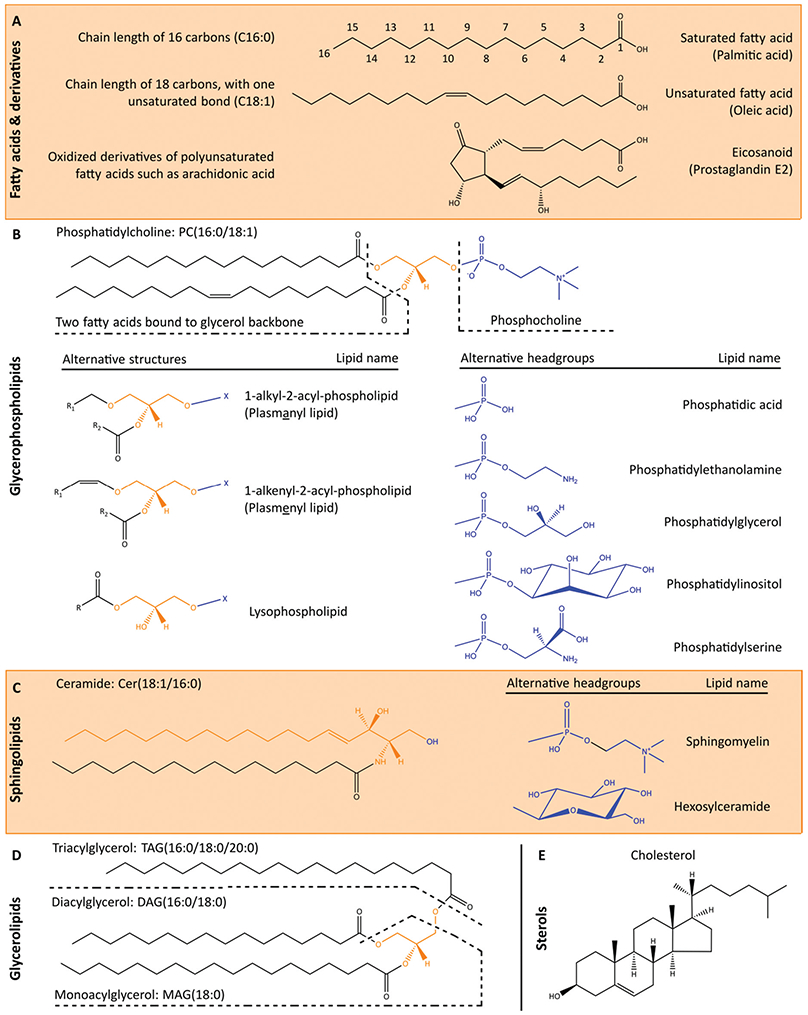Fig. 2.

Cellular lipids can be broadly divided into fatty acids, glycerophospholipids, sphingolipids, glycerolipids and sterols. (A) Fatty acids and derivatives consist of a carboxyl group and hydrocarbon chain of varying lengths and number of unsaturated bonds which determines the three-dimensional structure of lipids and subsequently its functions and interactions. The nomenclature of lipids reflects the number of carbons and unsaturated bonds in the fatty acid chains of the molecule. (B) Glycerophospholipids contain a glycerol backbone (orange), lipid headgroup (blue) and at least one fatty acid or fatty alcohol chain. For the alternative structures, R refers to a fatty acid or fatty alcohol group, whilst X refers to the headgroup. Glycerophospholipids are major constituents of cellular membranes. (C) Sphingolipids contain a sphingoid backbone (orange), such as sphingosine or sphinganine, instead of a glycerol backbone. Sphingolipids play important roles in membrane fluidity and cell signalling. Ceramides contain a sphingoid backbone and a fatty acid chain but lack a polar headgroup, and function as diffusible signalling lipids. Sphingomyelins have a similar structure to ceramides but also contain a phosphocholine headgroup. A structurally distinct group of sphingolipids are the glycosphingolipids, which consists of a ceramide molecule bound to a sugar residue. A glycosphingolipid containing a single hexose such as glucose or galactose can be referred to as glucosylceramide or galactosylceramide, respectively. Glycosphingolipids containing more complex sugar structures and a sialic acid residue are called gangliosides, of which GM2, GM3, GD2 and GD3 are well-known examples. (D) Glycerolipids contain a glycerol backbone with at least one fatty acid chain but lack a headgroup, and generally function as central intermediates in glycerophospholipid synthesis or as lipid storage molecules. (E) Sterols are classified as a subgroup of the steroid molecules bound to a hydroxyl group. The unique rigid steroid structure of cholesterol disrupts the interaction between fatty acid chains to permit many biophysical roles, rather than relying on head group or fatty acid chains for function. Furthermore, the hydroxyl group of sterols can be esterified, forming sterol esters such as cholesteryl ester, which is commonly stored in lipid droplets.
